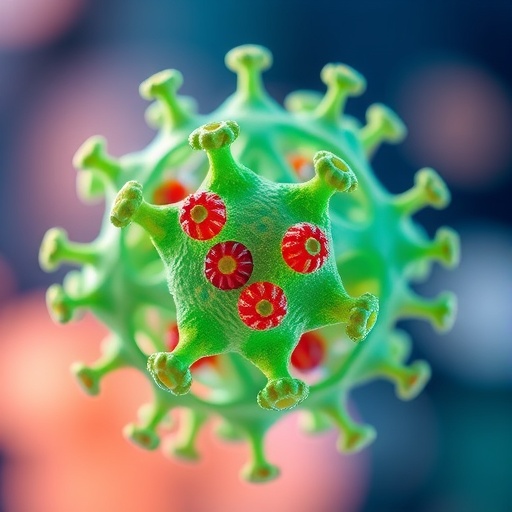A groundbreaking advancement in synthetic organic chemistry has emerged from the laboratories of Emory University, promising to significantly enhance the production of vinylic ethers—an essential class of organic compounds with broad applications in medicinal chemistry and drug development. This pioneering research, recently published in the prestigious journal Organic Letters, unveils notable enhancements to the Chan-Evans-Lam reaction, a crucial cross-coupling process widely used to form carbon-oxygen bonds utilizing a copper catalyst. These improvements dramatically improve the reaction’s efficiency and versatility, opening new pathways for the synthesis of complex bioactive molecules.
At the core of this innovation lies San Pham, a tenacious doctoral candidate at Emory whose strategic approach and deep dive into chemical literature revitalized a reaction once considered frustratingly inconsistent and limited in scope. Her pioneering modifications to the catalytic system have transformed the Chan-Evans-Lam reaction from a capricious process with unpredictable yields into a robust, high-yielding synthesis platform. By refining catalyst activation and regeneration steps, Pham achieved yields of approximately 80 percent, compared to the suboptimal 20-50 percent reported in earlier attempts, thereby overcoming historical bottlenecks that restricted the reaction’s broader application.
The significance of synthesizing vinylic ethers resides in their unique structure: an oxygen atom bonded directly to a vinyl carbon, which is itself attached to an alkene moiety. These features render vinylic ethers indispensable intermediates in the laboratory synthesis of numerous natural products and pharmacologically relevant molecules, including plasmalogens—a class of ether phospholipids integral to cellular membranes with roles in antioxidation and anti-inflammatory processes. However, traditional synthetic routes to these ethers, especially those bearing complex alkene substituents, have been notoriously inefficient and limited.
For nearly six years, the McDonald laboratory at Emory, with Professor Frank McDonald at the helm, sought to develop a more practical synthetic methodology. While the Chan-Evans-Lam reaction, established over two decades ago, proved effective with simple substrates, its application to structurally sophisticated partners remained an unresolved challenge. The copper acetate catalyst essential to this reaction prone to exist as a dimeric complex, which hinders the catalytic activity necessary for successful coupling reactions involving complex molecules. This dimerization presented a critical obstacle, limiting the reaction’s reliability and reproducibility, factors crucial for scalable pharmaceutical synthesis.
Pham’s breakthrough came through her extensive examination of secondary literature, uncovering insights on ligand chemistry that allowed for the dissociation of the inert dimeric copper species into catalytically active monomers. She systematically evaluated numerous catalyst activators, commonly known as ligands, to stabilize the copper monomers, thereby enhancing catalytic turnovers. Although initial attempts raised the yield only moderately, the true leap forward emerged through her investigation into catalyst regeneration methods.
Identifying the slow regeneration of the copper catalyst as a production bottleneck, Pham innovated by substituting molecular oxygen—commonly used for catalyst turnover—with organic peroxides as more effective reoxidants. This clever substitution accelerated the catalyst’s regeneration cycle, suppressed undesirable side reactions, and shifted the reaction equilibrium towards the formation of desired vinylic ether products. This discovery not only boosted the yield but also increased reaction consistency, fostering reproducibility critical for application in industrial settings.
Pham’s refined protocol demonstrated impressive generality across a diverse array of substrates, expanding the usable chemical space for functionalized vinylic ethers. Her team successfully synthesized at least 15 previously unreported compounds, all yielding synthetically useful quantities. These newly accessible molecules offer promising scaffolds for the exploration of therapeutic agents, especially in fields requiring precise manipulation of bioactive lipid derivatives like plasmalogens.
The broader implications of this work resonate across medicinal chemistry and pharmaceutical research. Reliable access to functionalized vinylic ethers catalyzes the design and synthesis of complex molecular architectures that are often core components of drug candidates. By alleviating longstanding synthetic barriers, the improved Chan-Evans-Lam protocol empowers researchers to explore new chemical landscapes, potentially accelerating drug discovery pipelines for treatments of diseases linked to oxidative stress and inflammation.
Furthermore, the affordability and safety profile of the new reagents and catalysts bolster the reaction’s attractiveness for widespread laboratory adoption. The use of inexpensive copper catalysts paired with accessible ligands and organic peroxide oxidants reflects an economically viable and environmentally considerate approach, aligning with the growing emphasis on green chemistry principles in pharmaceutical manufacturing.
Looking beyond the immediate synthetic achievements, the McDonald laboratory aims to harness these advancements in the synthesis of plasmalogen analogs, probing their biological roles and therapeutic potential. Given plasmalogens’ implication in protecting cells from oxidative damage and modulating inflammation, this chemistry offers a vital tool for biochemists and pharmacologists seeking to develop novel interventions targeting metabolic and degenerative diseases.
Reflecting on the research journey, Pham emphasizes the value of perseverance and strategic hypothesis-driven experimentation in overcoming scientific challenges. Her methodical literature review coupled with targeted reaction design exemplifies a rational approach often overshadowed by random trial-and-error techniques in synthetic chemistry. This mindset not only yielded practical benefits but also embodies a reproducible pathway for future researchers facing comparable obstacles in complex reaction systems.
Professor McDonald highlights that this refined methodology not only advances Emory University’s research agenda but also holds promise for the scientific community at large. By providing detailed mechanistic insights and experimentally validated protocols, this work lays the foundation for further innovations in copper-catalyzed cross-coupling reactions, broadening the synthetic toolbox available for crafting biologically and pharmaceutically relevant molecules.
In essence, the evolution of the Chan-Evans-Lam reaction reported here transcends a mere technical improvement; it represents a conceptual leap that integrates catalyst activation, turnover, and regeneration into a cohesive, efficient system. This synergy enables the synthesis of structurally complex vinylic ethers previously deemed impractical, heralding a new era in organic synthesis that bridges methodological rigor with practical utility in drug discovery.
Subject of Research: Not applicable
Article Title: Chan-Evans-Lam Cu(II)-Catalyzed C-O Cross-Couplings: Broadening Synthetic Access to Functionalized Vinylic Ethers
News Publication Date: 27-Jun-2025
Web References: 10.1021/acs.orglett.5c01966
Keywords: Organic synthesis, Organic reactions, Chemical compounds, Pharmacology, Bioactive compounds




